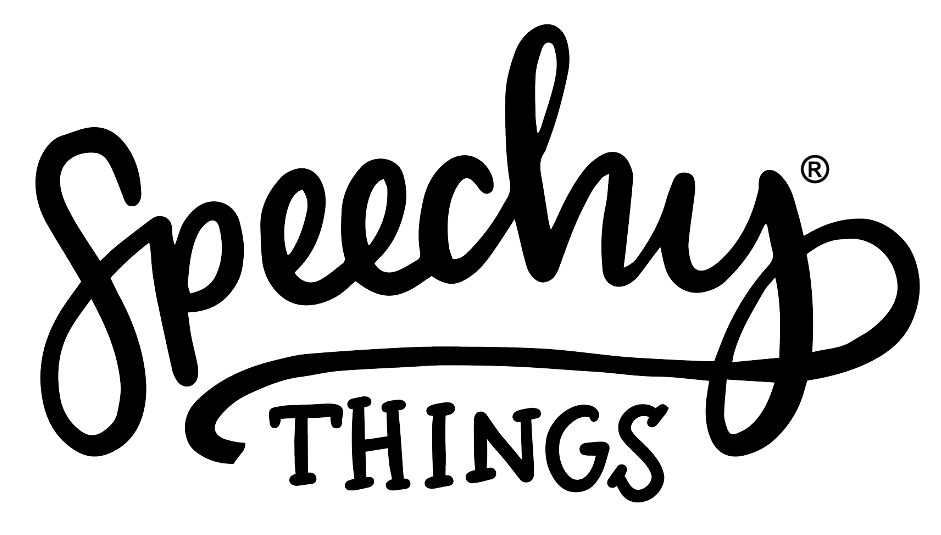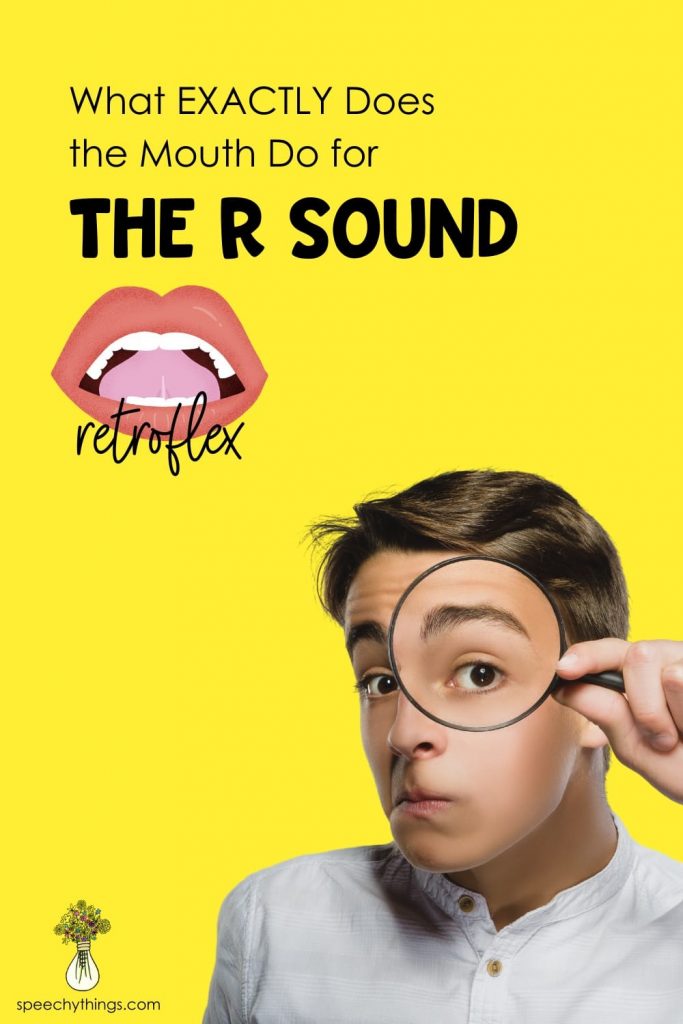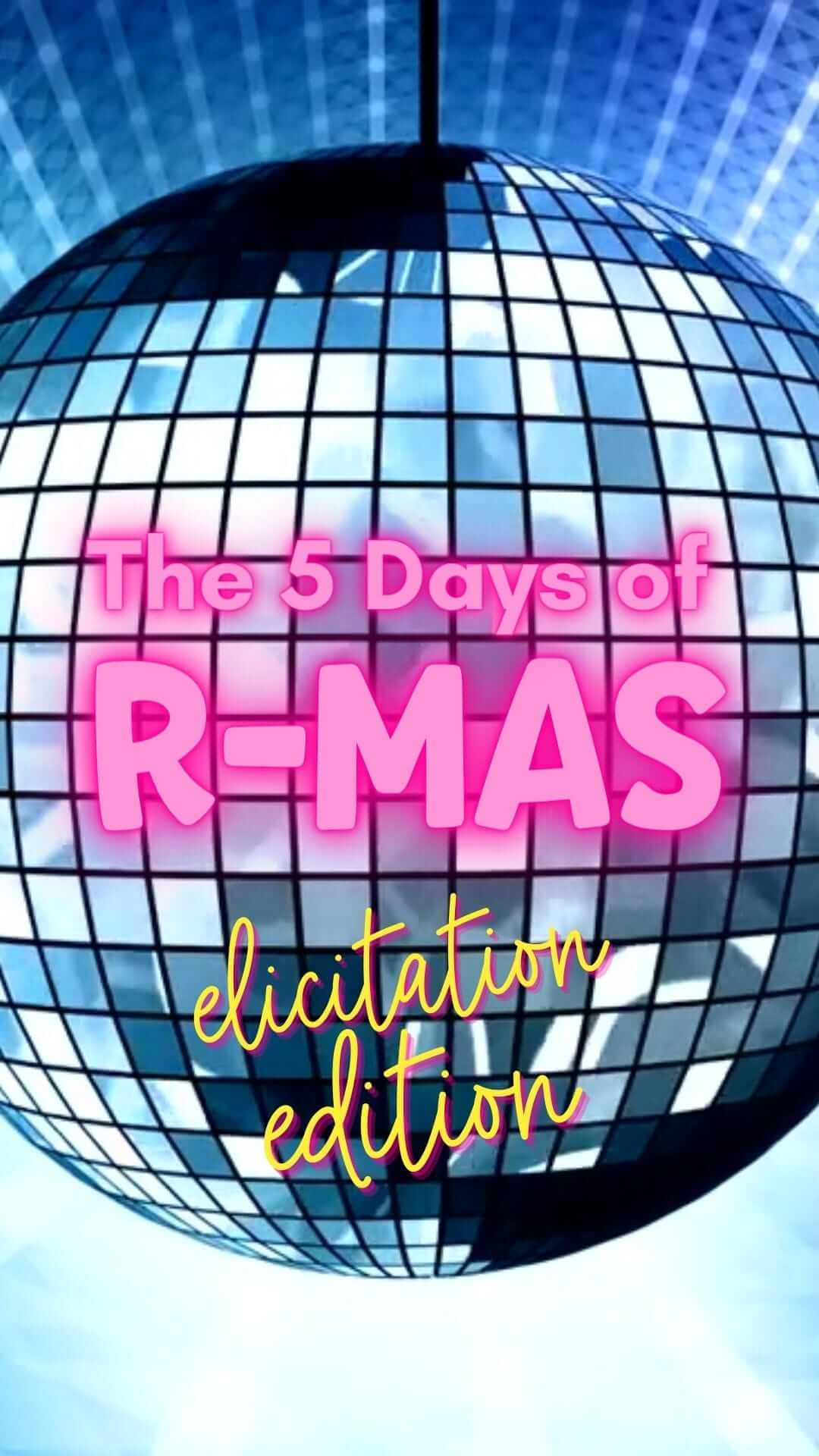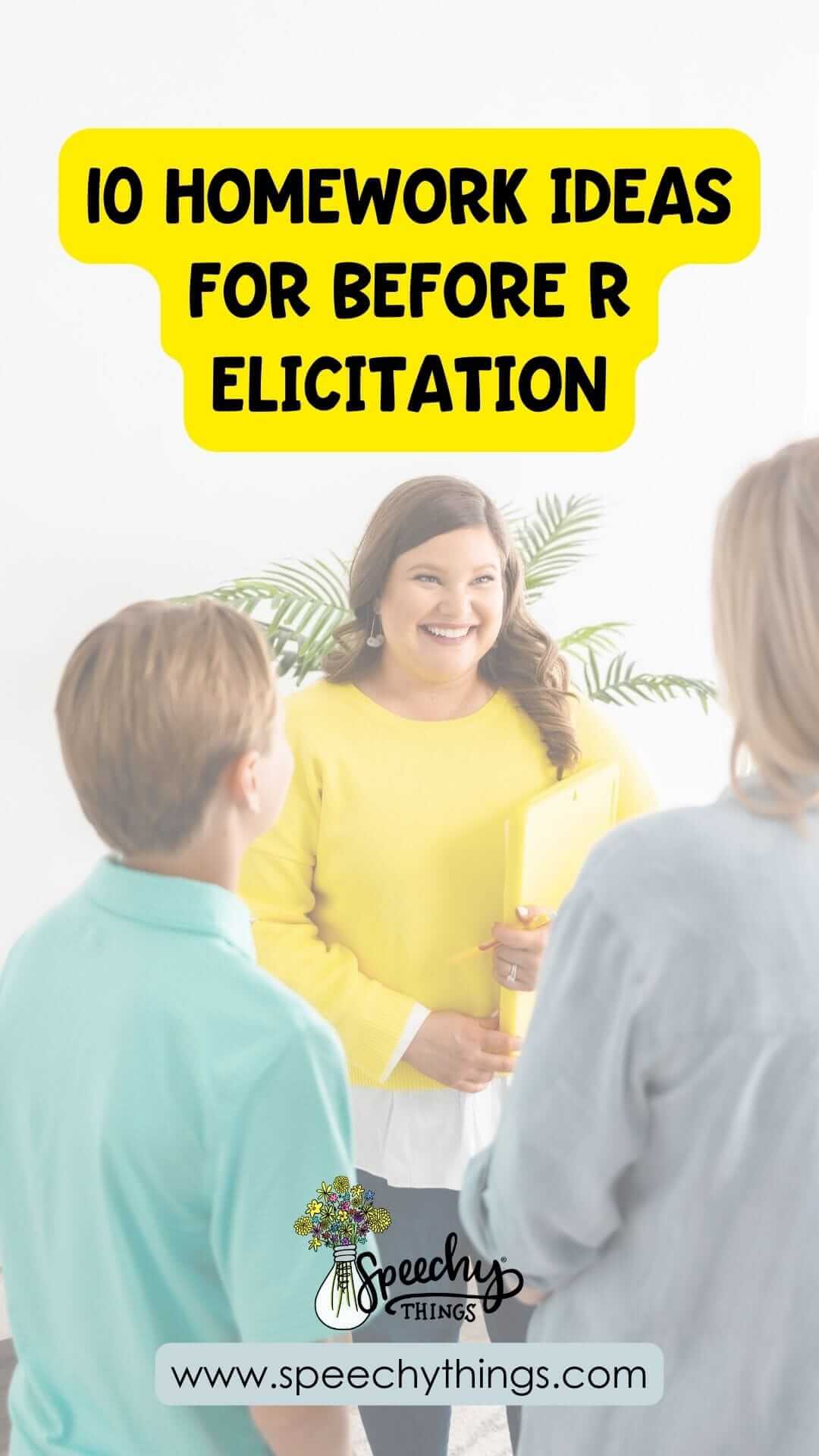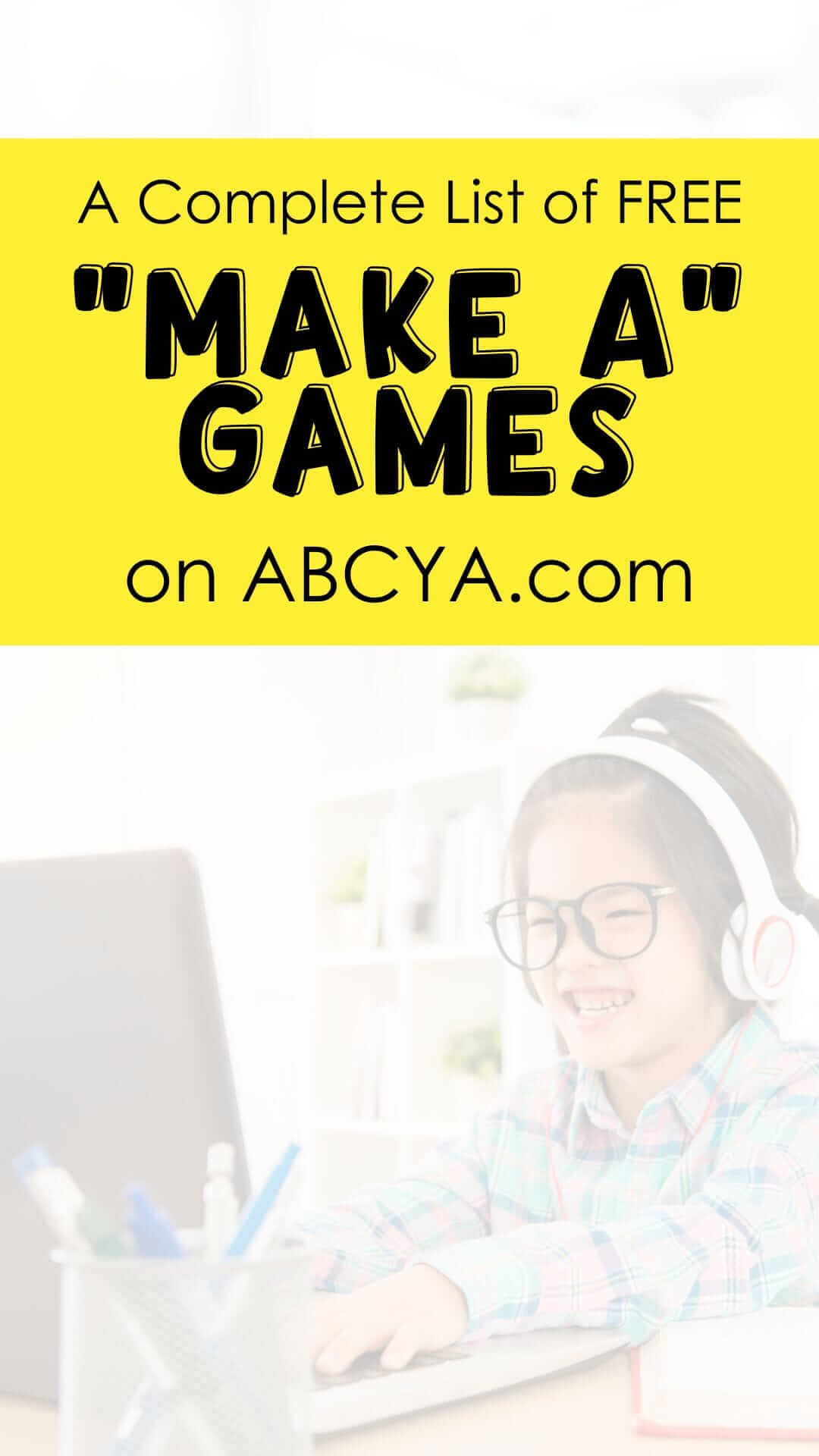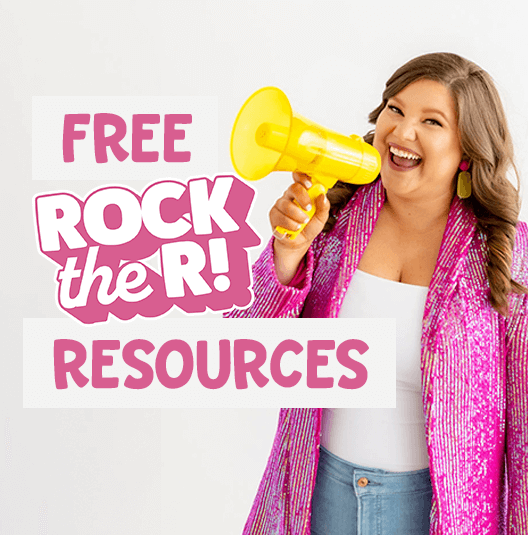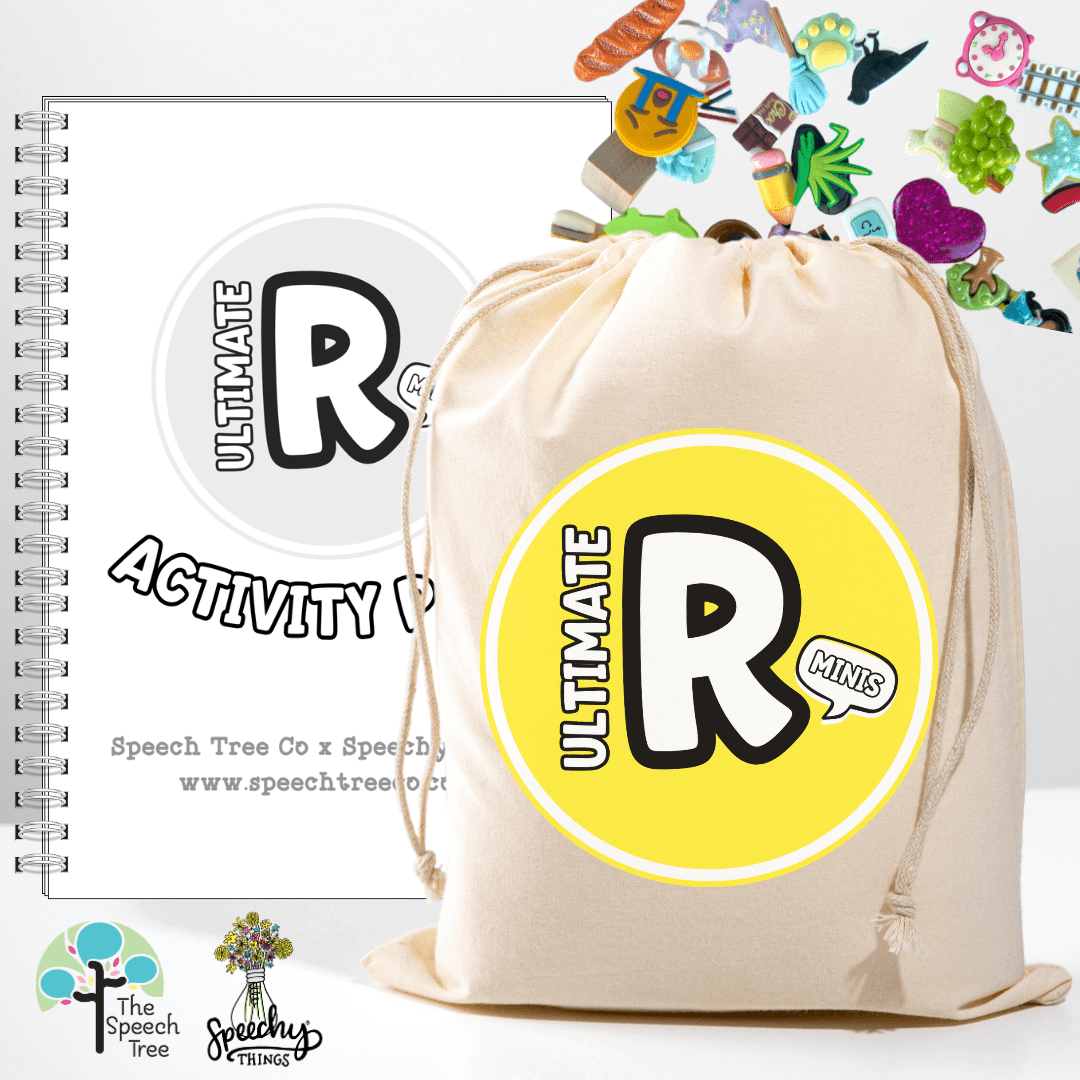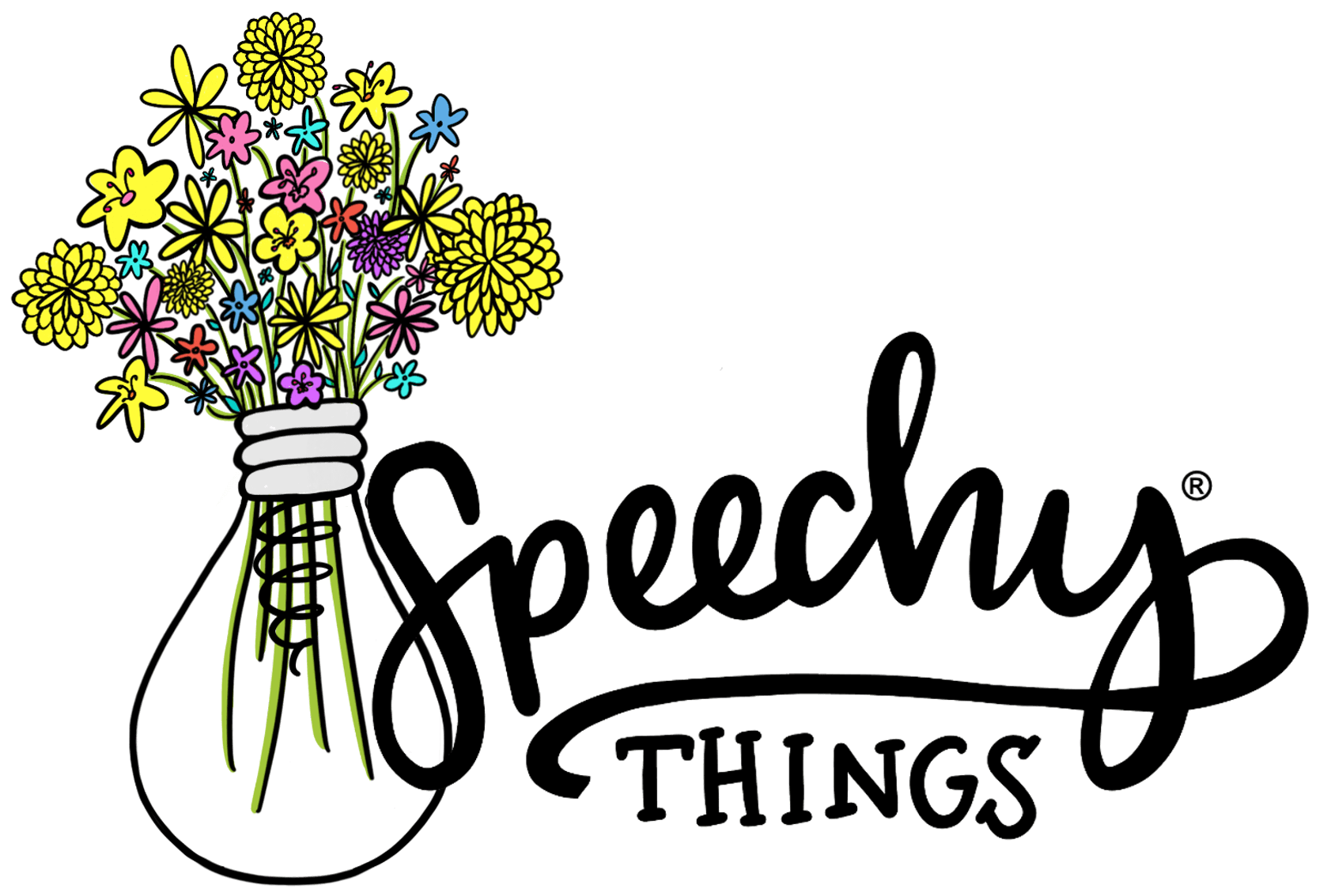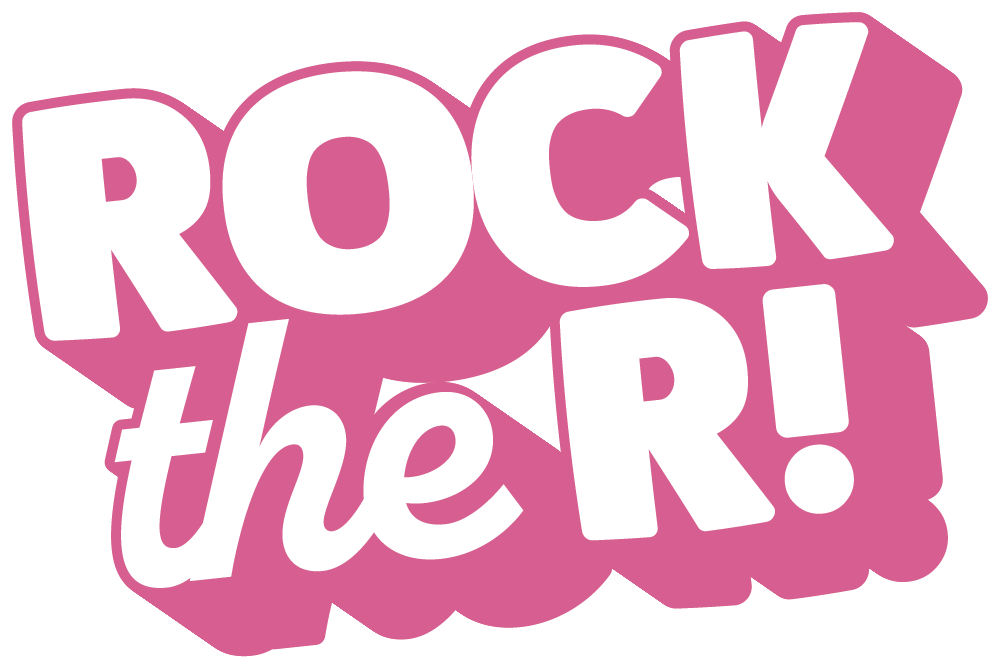The r sound is one of the trickiest to teach in speech therapy. I find most of my students find success with retroflex R vs bunched R, but no matter which R you’re working on, it’s important to start therapy by teaching the anatomy of the tongue. I often incorporate anatomy lessons in my R resources, including this freebie in my TpT shop.
Once we know the anatomy of our “R Machine”…. what is next for the R sound? Preston, et al, 2020 gives us an awesome explanation to bolster our own knowledge of this complex phoneme. Here’s the breakdown for retroflex R:
Tongue Tip
raised- pointed up toward the hard palate
Sides of Tongue
touching top molars/gums
Back of Tongue (root)
retracted, lower than tongue tip
Lips
slightly rounded
Jaw
slightly open
It sounds so easy on paper, doesn’t it? I know it’s not though. If you want to know more about retroflex R, you can read this post on my favorite way of teaching the r sound. In fact, this trick inspired my best-selling resource. Remember, some kids will do better with bunched though, and that’s okay! If you want info on how the mouth produces bunched R, you can read this blog post.
Best of luck! R is tricky but you’re well on your way to giving your students a solid foundation. Keep up the great work!






